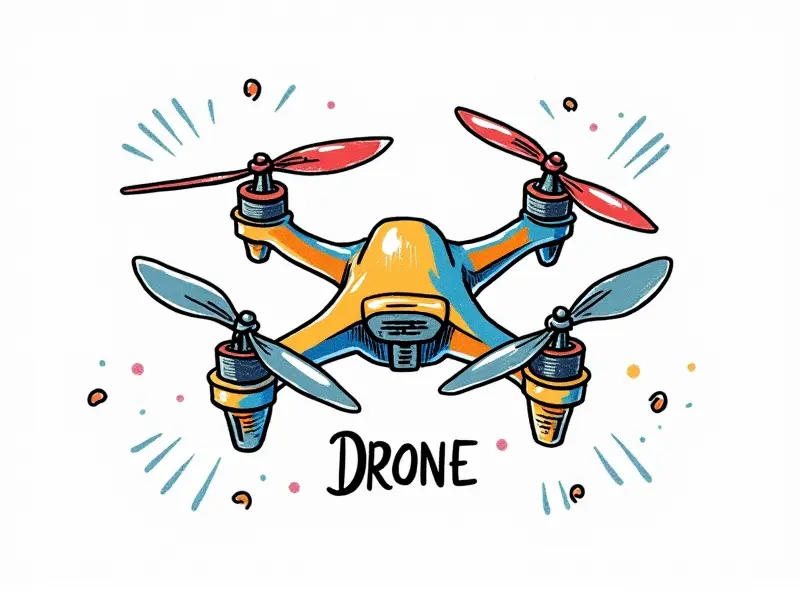Can drones fly inside homes?

Drones have become increasingly popular for both recreational and commercial use, offering a unique perspective on the world. However, many users wonder if it’s possible to fly drones inside homes or buildings. This article delves into the challenges, regulations, safety concerns, and best practices associated with indoor drone flight.
Can RC Drones Navigate Indoors?
The ability of remote-controlled (RC) drones to navigate indoors depends on several factors such as the drone's size, maneuverability, and the environment. Smaller drones are generally better suited for indoor use due to their compact design and agility.
Challenges of Indoor Drone Use
- Limited Space: Indoors, there’s less room to maneuver compared to open areas. Drones need to avoid obstacles like furniture, walls, and ceilings.
- Navigational Issues: GPS signals are often weak or non-existent indoors, making it challenging for drones to maintain orientation and stability.
- Safety Concerns: Flying a drone inside can pose risks of damage to property and injury to people.
Tips for Flying Drones Indoors
- Select the Right Drone: Opt for drones designed specifically for indoor use, such as toy drones or those equipped with obstacle-avoidance technology.
- Clear the Area: Remove any obstacles that could interfere with flight and ensure there’s enough space to maneuver safely.
- Practice Slowly: Start by flying slowly and cautiously to get a feel for indoor navigation before attempting more complex maneuvers.
Indoor Drone Flight: Is It Possible?
While it is technically possible to fly drones indoors, it requires careful planning and the right equipment. Drones designed for indoor use are typically smaller, quieter, and equipped with advanced sensors that help them avoid obstacles.
Are Home Drones Legal Inside?
The legality of flying drones inside homes varies by country and jurisdiction. In general, most regulations focus on outdoor drone usage. However, it’s still essential to check local laws and homeowner association rules regarding indoor drone flights.
The Reality of Indoor Drone Flight
Flying a drone indoors presents unique challenges that must be addressed through careful planning and the use of appropriate technology. Drones designed for indoor use are equipped with features like sensors, cameras, and advanced flight stabilization systems to ensure safe operation in confined spaces.
Flying Drones Safely Inside Houses
- Choose a Safe Location: Select an area that is free of obstacles and large enough for the drone to maneuver safely.
- Use Obstacle-Avoidance Technology: Modern drones come with sensors that detect objects in their path, helping prevent collisions.
- Avoid Pets and Children: Ensure pets and children are away from the flying area to avoid accidents or disruptions.
Can Drones Navigate Small Spaces?
Drones designed for indoor use excel in navigating small spaces due to their compact size, agility, and advanced sensors. These features make them ideal for tasks like inspecting tight areas within buildings without the need for physical access.
Best Drones for Indoor Flying
- Toy Drones: Ideal for beginners due to their small size, affordability, and easy maneuverability.
- Mavic Mini: A popular choice among hobbyists and professionals due to its lightweight design and advanced features.
- DJI FPV Drone: Offers high-speed performance and immersive first-person view (FPV) experience, suitable for experienced pilots.
Indoor Drone Flight Regulations Explained
The regulatory landscape for indoor drone flights is less defined compared to outdoor usage. However, it’s crucial to adhere to any local laws or homeowner association rules that might apply to indoor drone use.
Is It Safe to Fly Drones Indoors?
- Property Damage: There’s a risk of damaging property if the drone collides with objects inside the home.
- Injury Risks: Flying drones indoors can pose risks to people, especially in crowded or uncontrolled environments.
- Privacy Concerns: Indoor flights might raise privacy issues if capturing images of individuals without consent.
Conclusion
Flying drones indoors is possible with the right equipment and planning. While there are challenges such as limited space, navigational difficulties, and safety concerns, advancements in drone technology have made indoor flight more feasible than ever before. By choosing the appropriate drone and following best practices, you can enjoy the benefits of indoor drone flying safely and responsibly.

